Day 4: Valley of Kings and Hatshepsut’s temple
Day 4 was another packed day including a tour of the Valley of Kings, Amenhotep III’s mortuary temple and Hatshepshut’s temple. We got off to an early start to take advantage of the relatively cool morning hours and drove about 30 min to the Valley of Kings, located on the west bank of the Nile river. Along the way, we passed by Ramesseum, Rameses II’s mortuary temple (a place of worship dedicated to pharaoh, where his memory would have been kept alive after his death). It was cool to see hot air balloons hovering over Ramesseum–both creations of the human mind, separated by 3500 years! Some of the people in my group signed up for the hot air balloon tour (~$100), but it required getting up at 4AM in the morning, so I decided to pass.
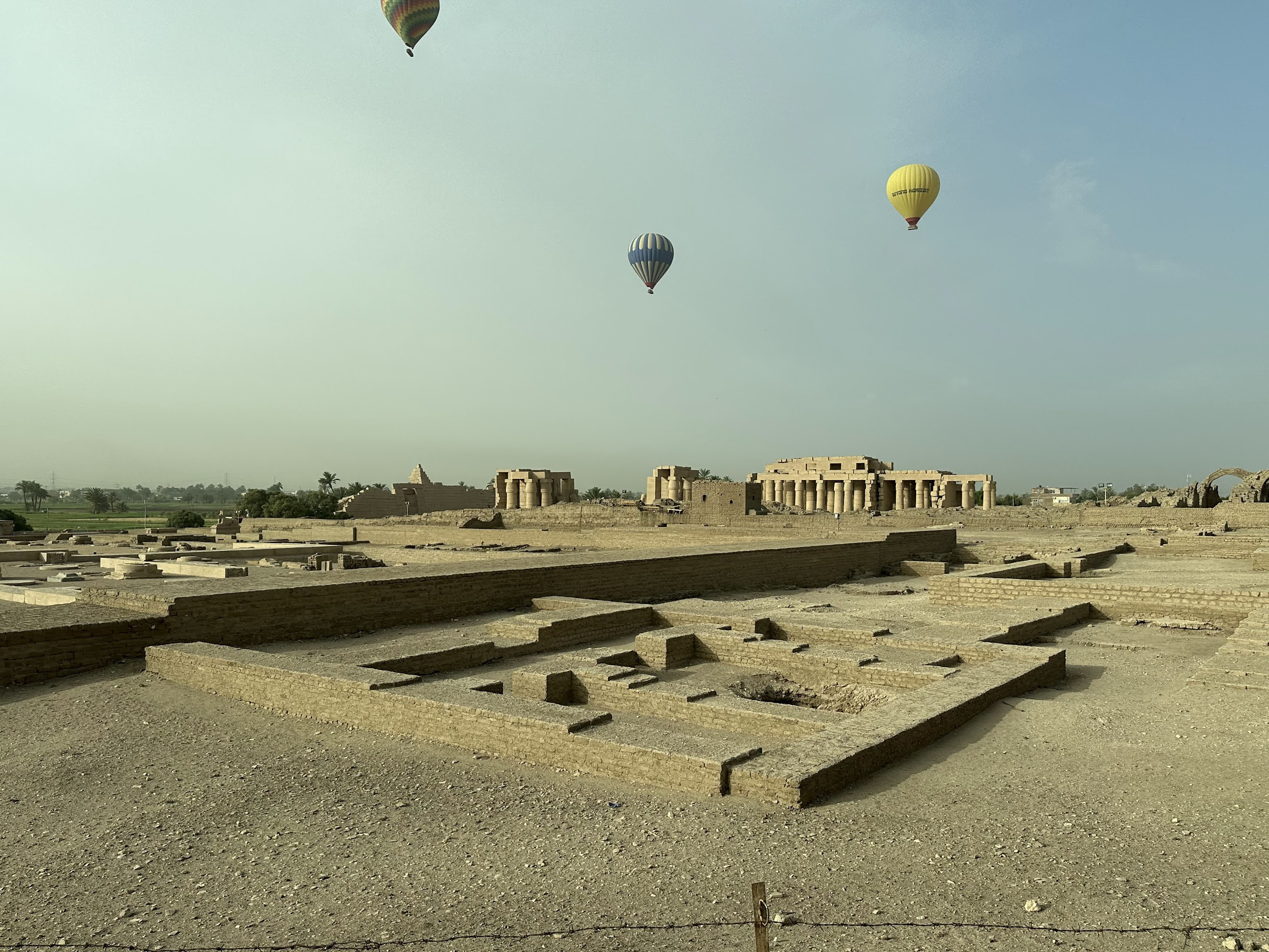
As noted above in the section on tomb robbery, nearly all the tombs built by the pharaohs of the old and middle kingdom had already been robbed by the beginning of the new kingdom. Starting with Amenhotep I, kings of the New Kingdom (1539–1075 BC), adopted a new plan of concealing their tombs. Rather than building massive pyramids, they started building subterranean tombs in a lonely valley in the western hills behind Thebes (present-day Luxor). There, in tombs sunk deep into the heart of the mountain, dozens of pharaohs from the XVIII and XIX dynasties were interred, as were several queens, a few officials of high rank, and the numerous sons of Ramses II.
The plan of the tombs varies considerably but consists essentially of a descending corridor interrupted by deep shafts to baffle robbers and by pillared chambers. At the farther end of the corridor is a burial chamber with a stone sarcophagus in which the royal mummy was laid and store chambers around which furniture and equipment were stacked for the king’s use in the next world. The walls were covered with sculptured and painted scenes depicting the dead king in the presence of deities, especially the gods of the underworld, and with illustrated magical texts from the Book of the Dead and spells designed to help him on his journey through the nether regions.
This journey culminated in the “weighing of the heart” rite, where the heart of the pharaoh was weighed in the scale against the feather of the goddess Maat, who personifies order, truth, and what is right. The scales were watched by Anubis (the jackal-headed god of embalming) and the results recorded by Thoth (the ibis-headed god of writing). If a pharaoh had ruled justly and led a decent life, the heart balanced with the feather and the person was rendered worthy to live forever in paradise with Osiris.
Because according to the Egyptians, the heart, rather than the brain, was the source of human wisdom and the center of emotions and memory, the heart was left in the deceased’s body during mummification.
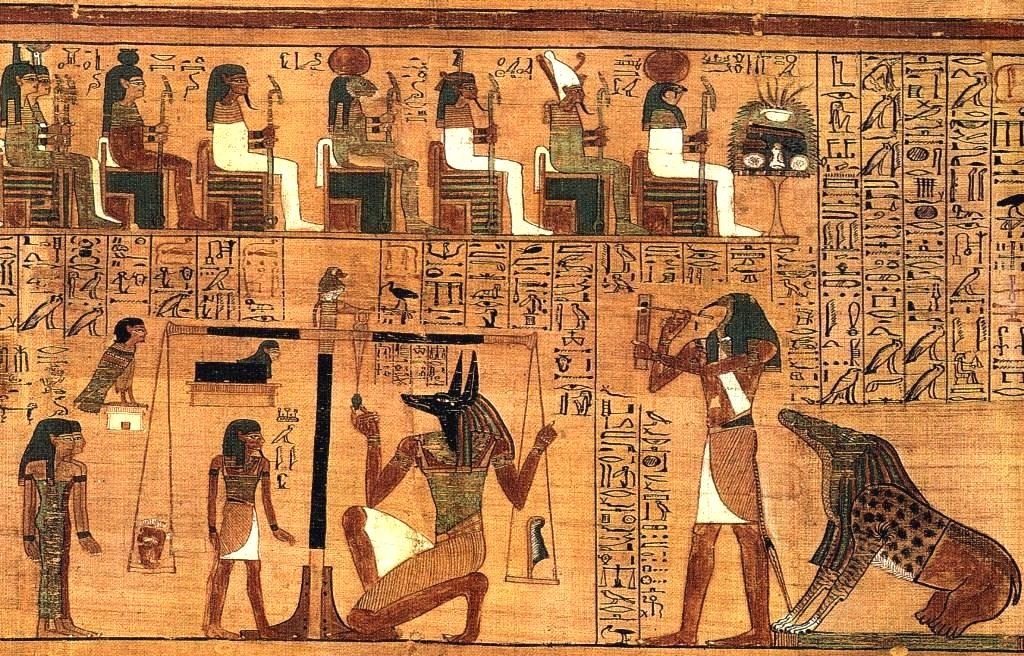
The visitor center at the entrance to the Valley of Kings has a nice map of the area, showing the location and layout of the tombs.
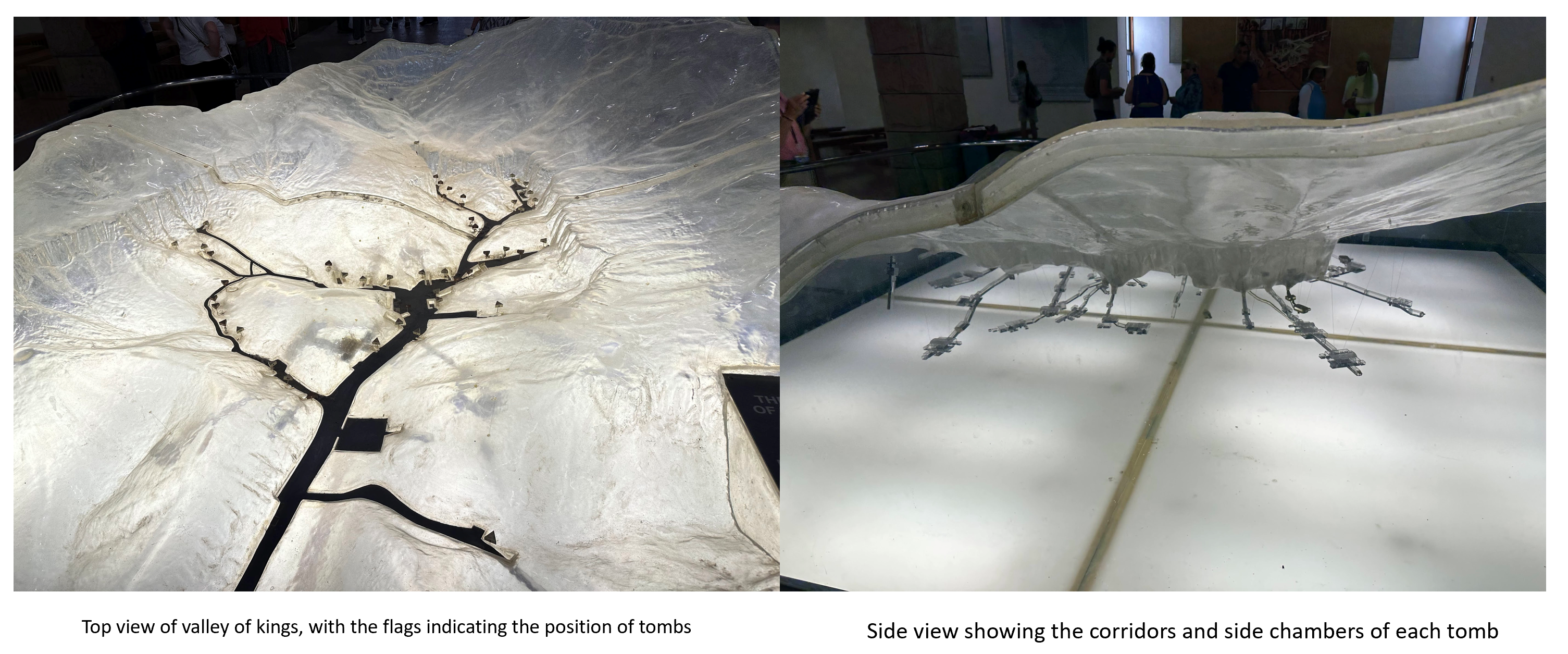
The ticket to the Valley of Kings cost 260 Egyptian Pounds (~$8) and covered entrance to three tombs. Tickets for the tombs of Seti I, Tutankhamun, Rameses V and VI were extra. Only a handful of tombs in the valley are open for tourists at a time and these are likely cycled over time to even out foot traffic. I decided to visit the tombs of Rameses IV, IX, III and VI.
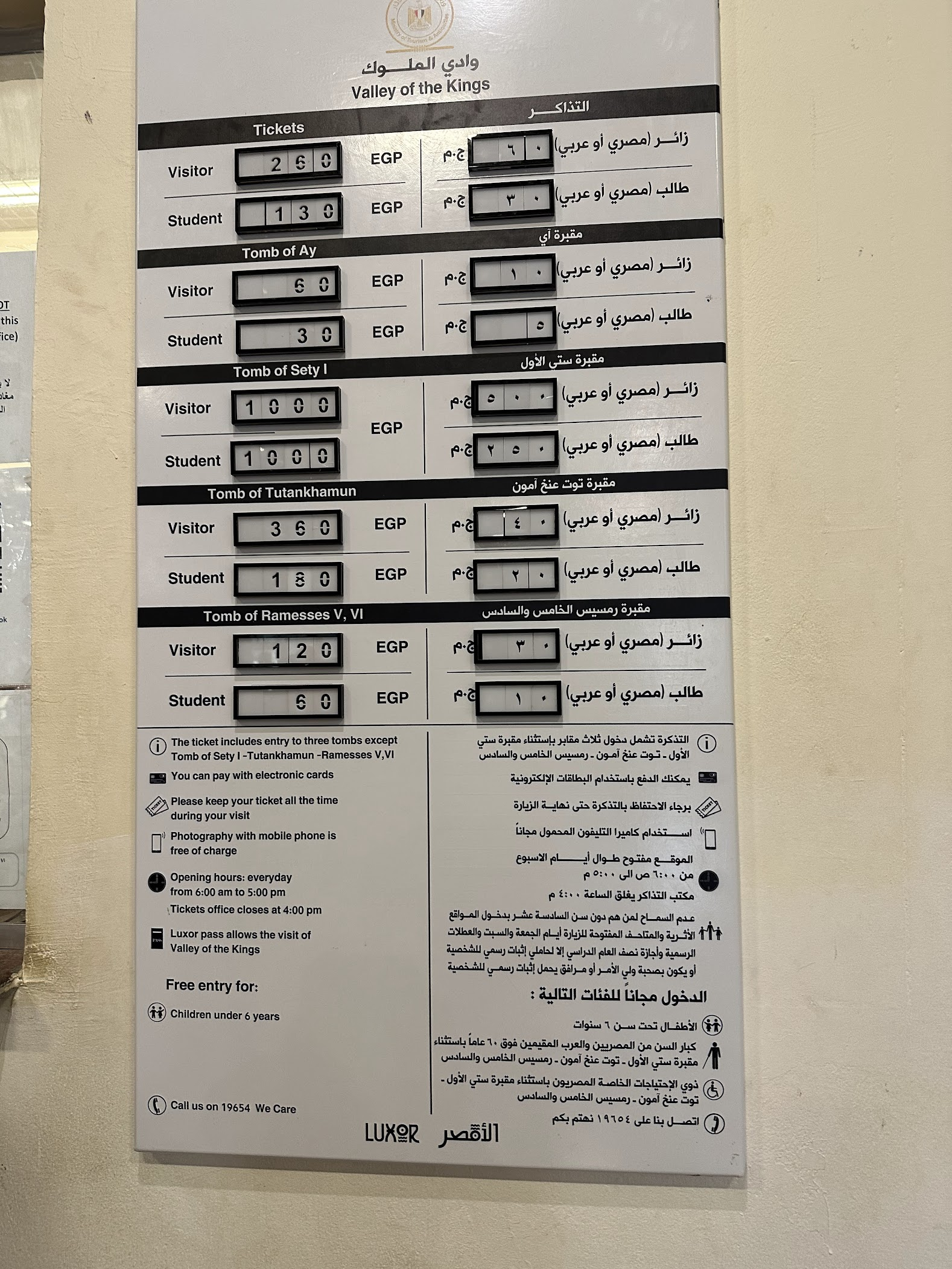
The reliefs and paintings on the walls of the tomb are stunning. The underground location of the tombs protected the paintings from the ravages of time and the paint though faded is largely intact. It is awe inspiring that these rich colors once covered the surfaces of the other monuments I saw on my tour!
At the end of the tomb of Rameses IV, behind the sacrophagus, a portly Egyptian man was guarding the entrance to the store chambers around where furniture and equipment were stacked for the king’s use in the next world. He was charging money to take pictures of the chambers. I wanted to see what those chambers looked like, so I negotiated the price down to 60 pounds and with some trepidation, handed him my phone to take pictures. He did a quick whirl around the chambers snapping pictures and handed back my phone. I didn’t have change, so I gave him a 200 Pound note. He rummaged around in his pockets and gave me back some change. He must have been hoping I wouldn’t count the change, because he gave me 50 pounds back, slipping a 10 Pound note for a 100 Pound note. When I pointed out the discrepancy, he started making a racket, shouting something in Arabic.. The whole episode left a really bad taste. He must have been in cahoots with the guard at the entrance of the tomb checking for tickets, who must be an Egyptian government employee.. It is surprising that such blatant corruption is allowed to take place, specially in a place that gets such heavy tourist traffic.

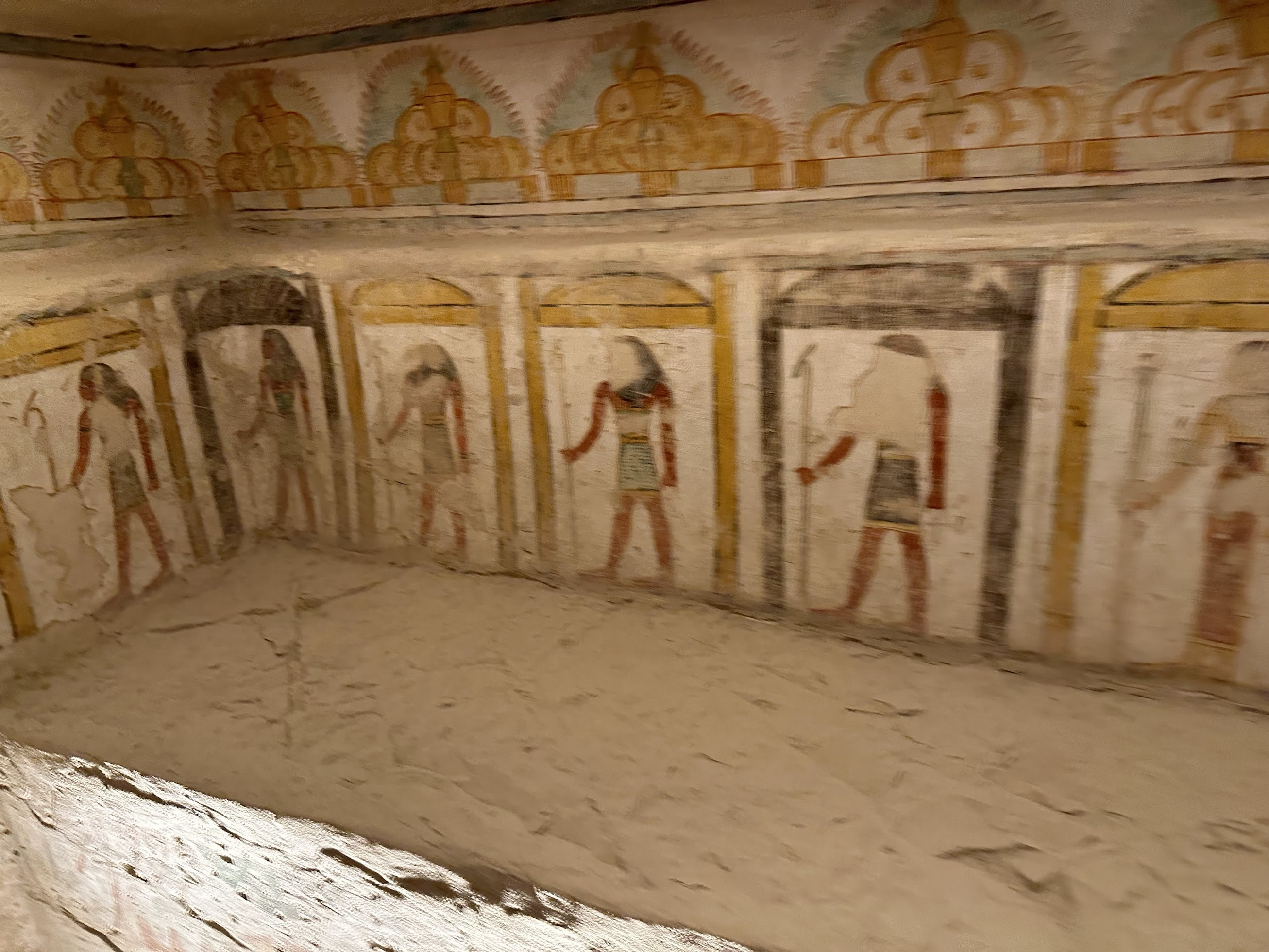
The videos below show a walk through of the tombs of Rameses IV and VI. Notice that there are fewer tourists in the tomb of Rameses VI, likely because of the extra fee for entrance to that tomb.
The tomb of Nefertari, the wife of Rameses II in the Valley of Queens is open as well. The paintings in this tomb are the best preserved and most detailed source of the ancient Egyptian’s journey towards the afterlife. Perhaps for this reason, the entrance to this tomb costs the most (~1400 Egyptian Pounds). If I visit Egypt again, I think I’ll check out the tomb of Nefertari!

Hatshepsut’s temple was the next stop on our itinerary. Along the way, we briefly stopped at the mortuary temple of Amenhotep III, which in its time, was the largest funerary complex that was built. However because the mortuary temple was built relatively close to the river, the annual flooding caused the site to decay at a more rapid rate. Earthquakes in antiquity may also have contributed to its early demise.
Today all that remains are two large stone statues of Amenhotep III measuring 18 m high, placed at the entrance. These statues are called the Colossi of Memnon.
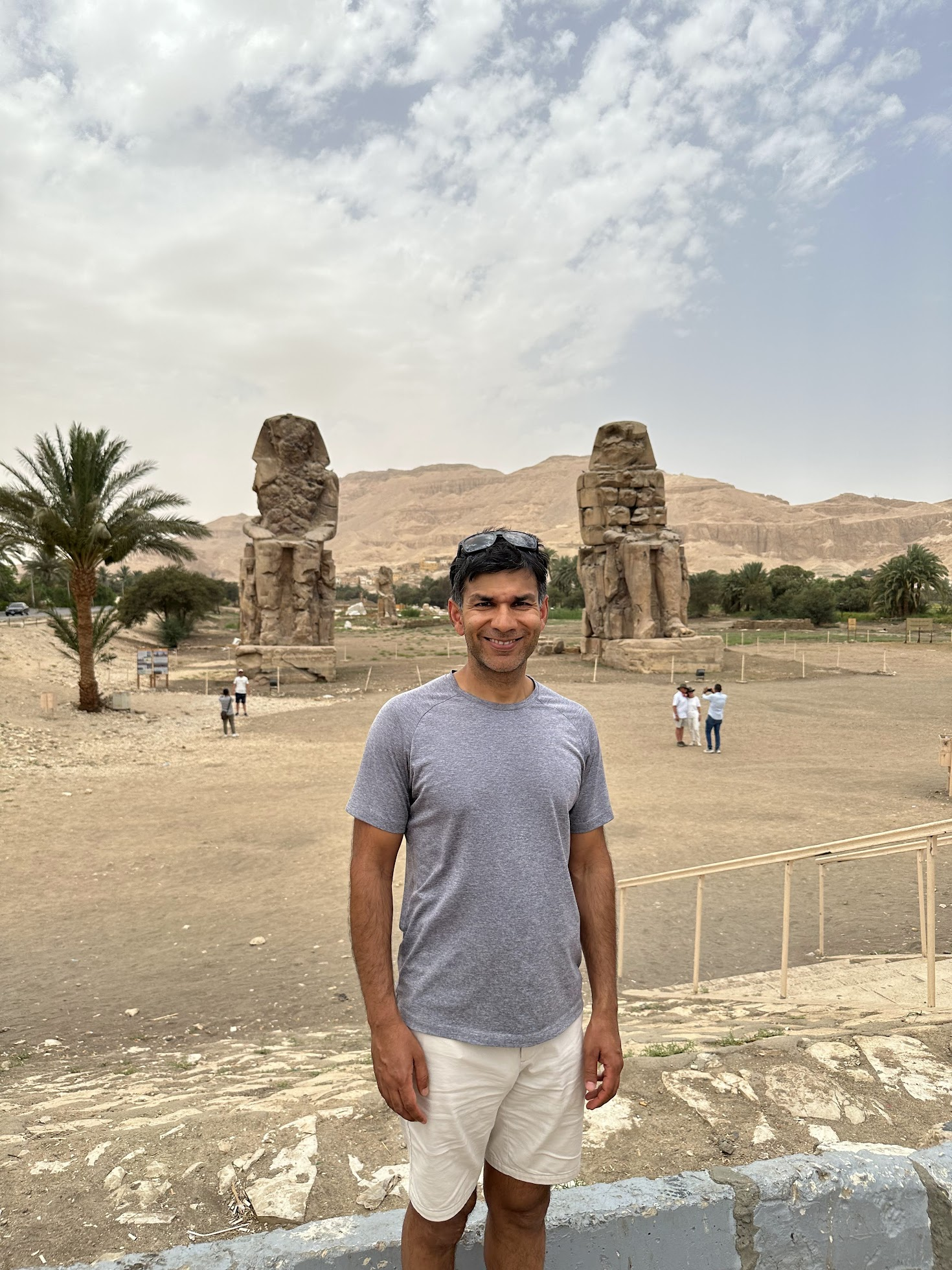
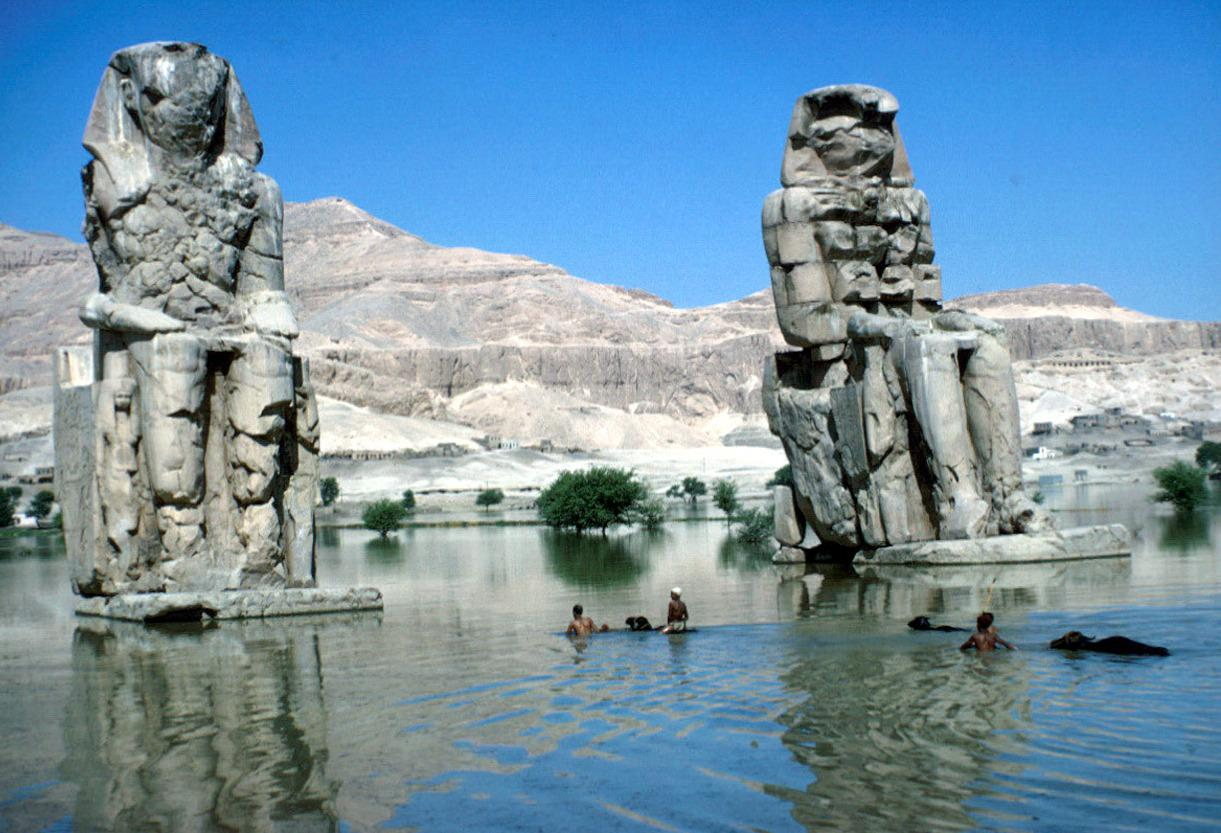
We also made a brief stop at a pottery making workshop, where we got a demo of how rocks such as granite and alabaster are carved to make pottery. Adjoining the factory was a showroom selling handmade and machine-made pottery. The pottery pieces didn’t have price tags on them. You were expected to take a piece you liked to a staff member, who’d quote you a price. I found this system weird and the items weren’t that exciting either.. it all seemed a let down from the amazing art I had just seen in the Valley of Kings that was made 4000 years ago!
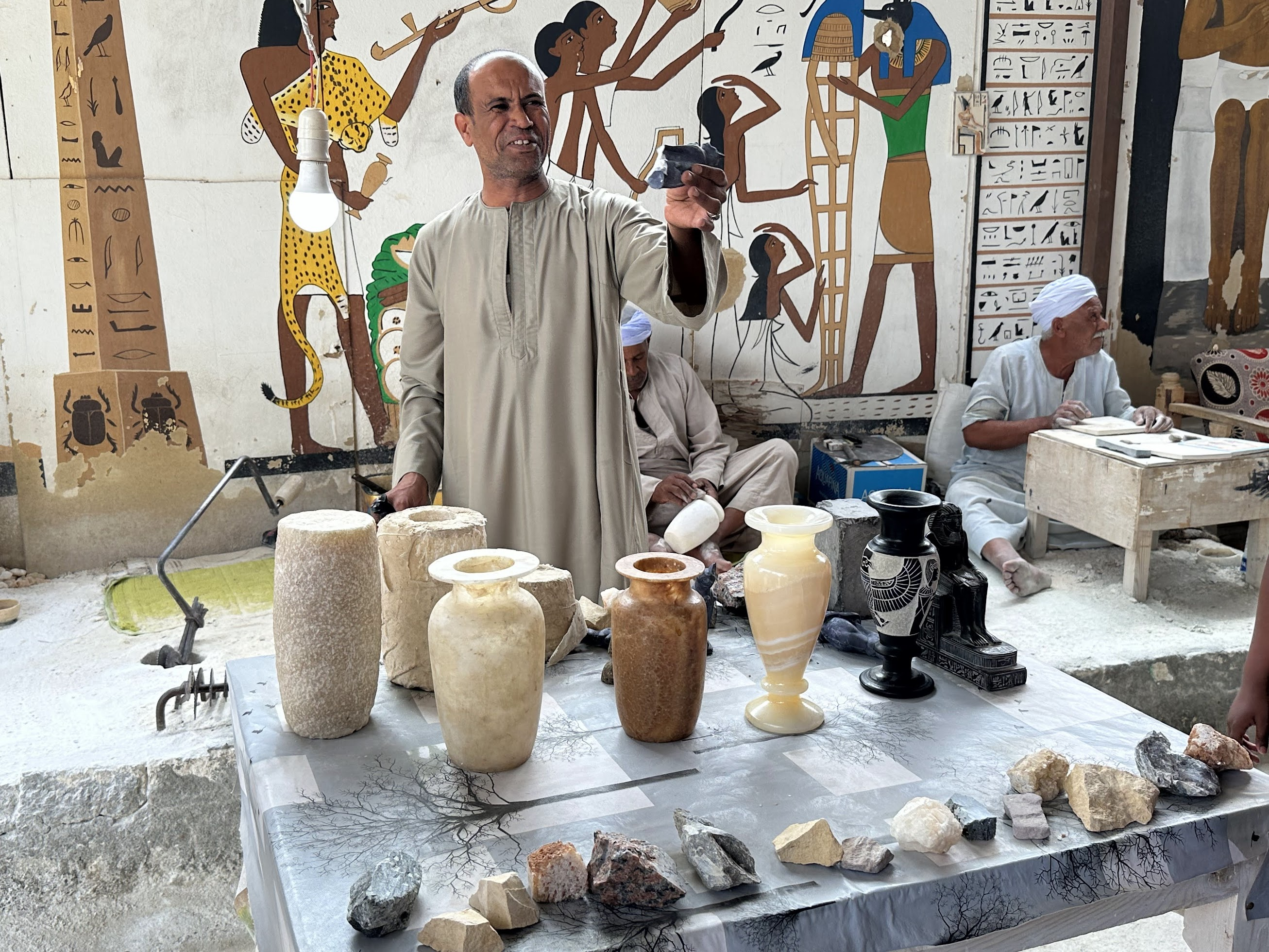
Hatshepsut was the fifth pharaoh of the 18th dynasty, and ruled from 1479-1458 BC. Her reign was marked with great prosperity, construction activity and foreign expeditions. Her mortuary temple is one of the masterpieces of ancient architecture. The temple features impressive statues of Hatshepsut, and scenes from major events in Hatshepsut’s reign such as maritime trading expedition she sent to Punt, the land of incense on the Red Sea and the transport of two obelisks by barge from Aswan to Karnak.
The temple of Hatshepsut was extensively restored and conserved through the joint efforts of the polish center of Mediterranean archeology and the University of Warsaw.

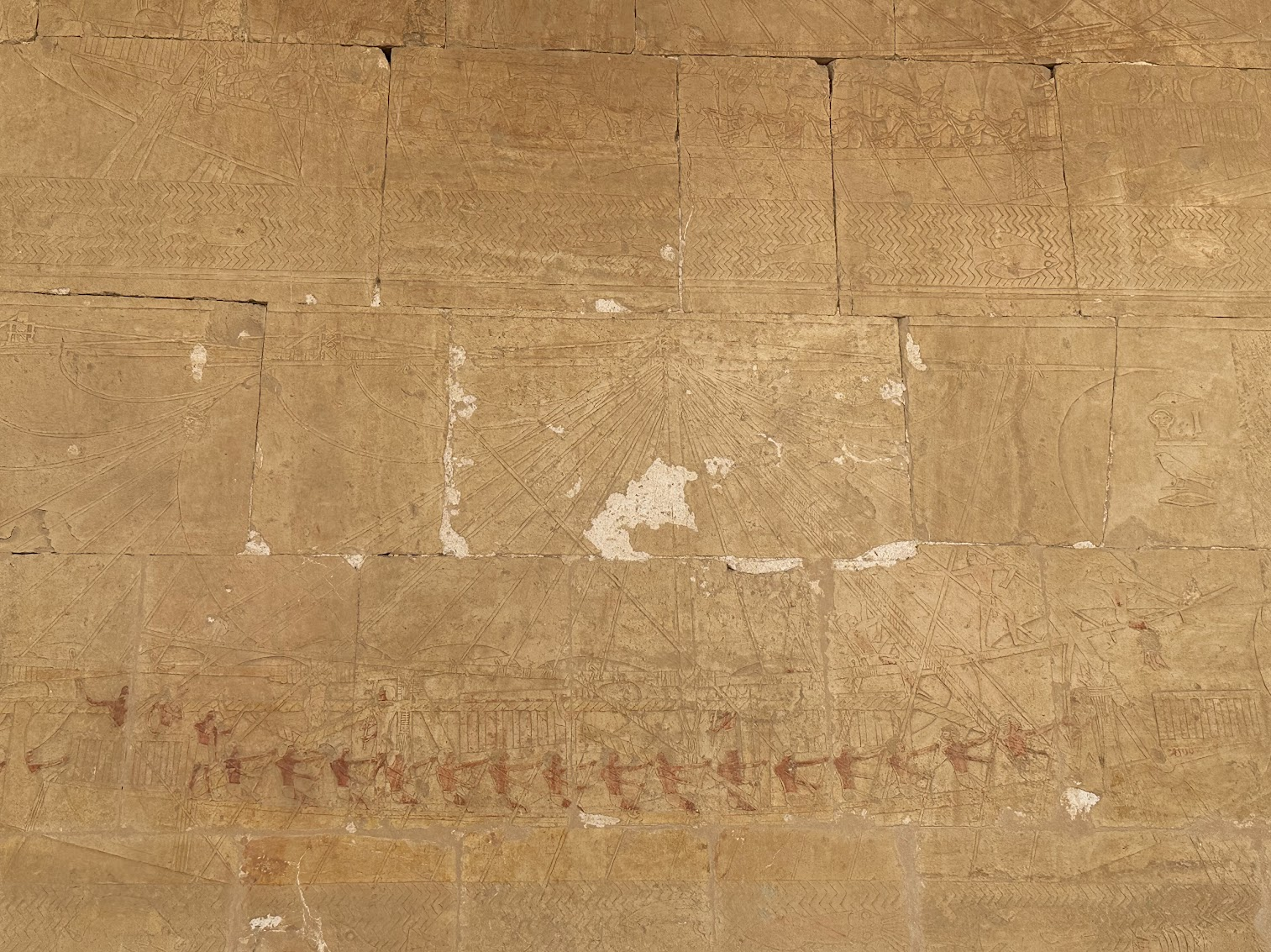
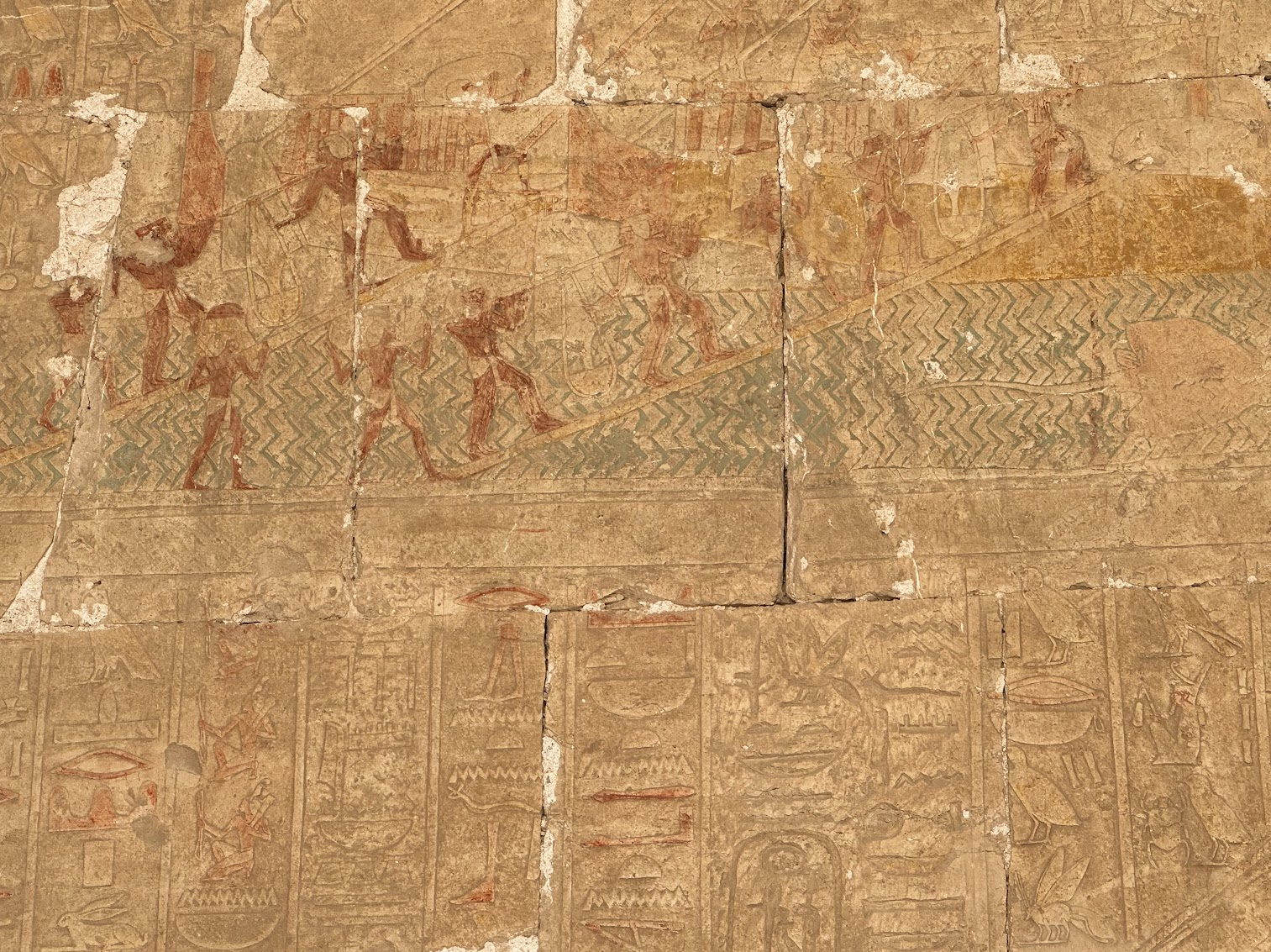

It was very hot outside. Sam gave us an overview of the temple and told us the story behind some of the painted reliefs. After that, we spent about 45 min touring the temple on our own. After the Hatshepsut temple visit, we made our way back to the cruise ship and took it easy the rest of the day. I got to know many of the people on the boat, who were a motley crew–small families with children, group of friends, a few couples.. nearly half the people were from Canada.
The cooks on board the ship cooked breakfast/lunch/dinner for us, and the quality of the food was excellent. We were also treated with a refreshment when we got back to the ship after an excursion. There were plenty of places on the ship to chill and relax. I spent many happy hours reading my Egyptian history book on the deck by the pool and watching the landscape on the banks of the Nile gently roll on as the ship slowly made its way upstream.
In the evening, our ship passed through the Esna lock, first built in the 19th century (and recently renovated) to control the flow of Nile water to preserve and store the water for agriculture and to improve river navigation. The water level on the two sides of the lock is different. When a boat going downstream enters the lock, the gates close behind it, and the water level in the lock is adjusted to match the level of the river downstream. Once the water level is equalized, the gates on the downstream side of the lock are opened, and the boat can continue its journey down the river. Same applies to a boat going upstream. It was pretty cool to see the lock in action.
As there were several ships going the same way and only two locks, we had to wait for our turn to enter the lock. As we were waiting, several small row boats pulled up along side our ship and ships around us. The people in the boats were trying to sell us stuff (which looked like textiles). It was quite a sight watching the rowers deftly maneuvering through the swirly water between the huge cruise ships and attempting to anchor their boat to the ships by tossing a long rope..
While I marveled at their courage, ingenuity and industry, I couldn’t imagine how it made economic sense for these people to go through so much effort selling a handful of items.. In the roughly 30 min we were parked in the water, I saw one sale happen (this includes the ships around us as well). A guy on the boat tossed up a package which was duly caught by the buyer standing on the cruise ship deck. Applause ensued. I’m not sure how he collected his payment!

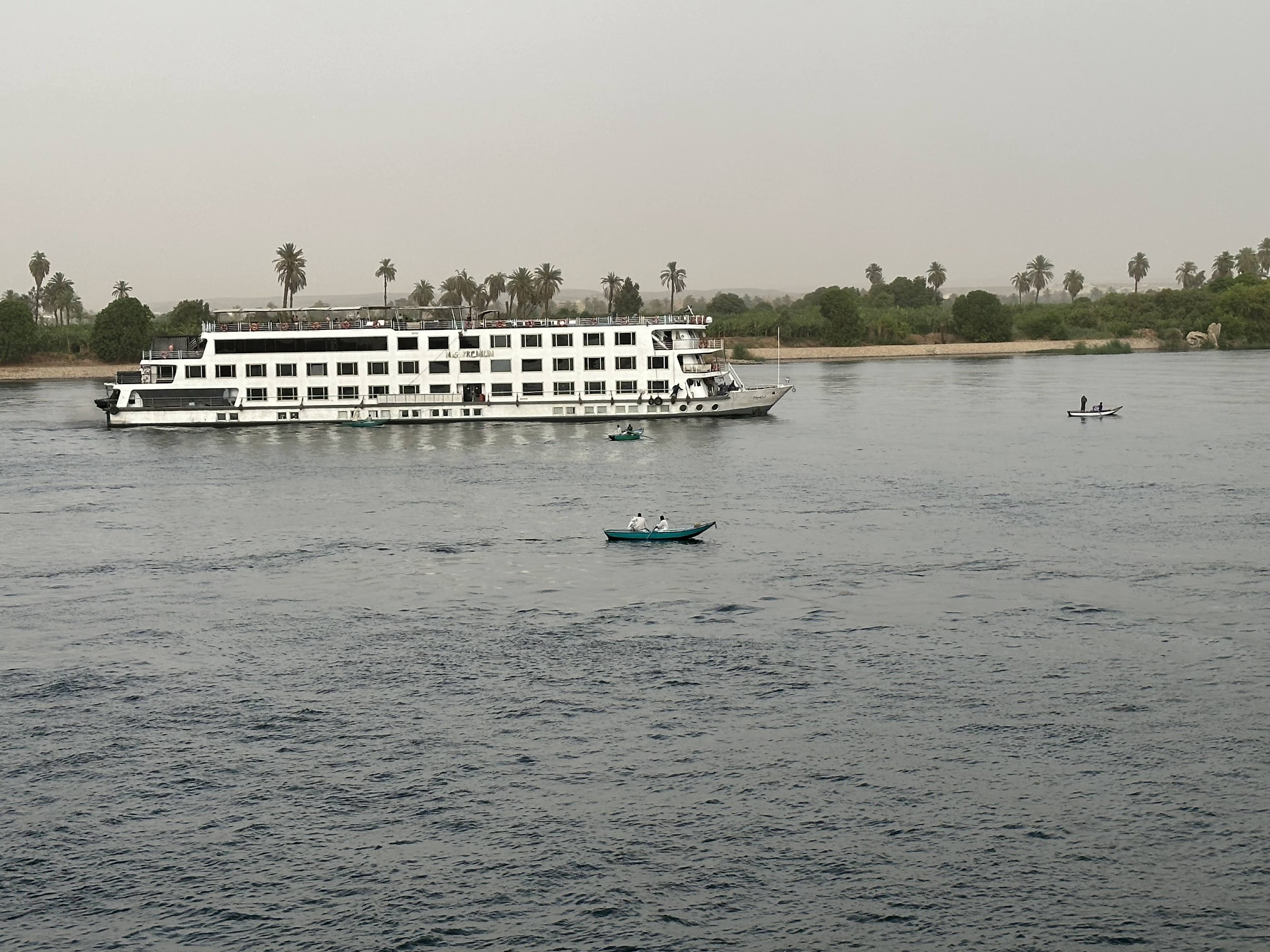
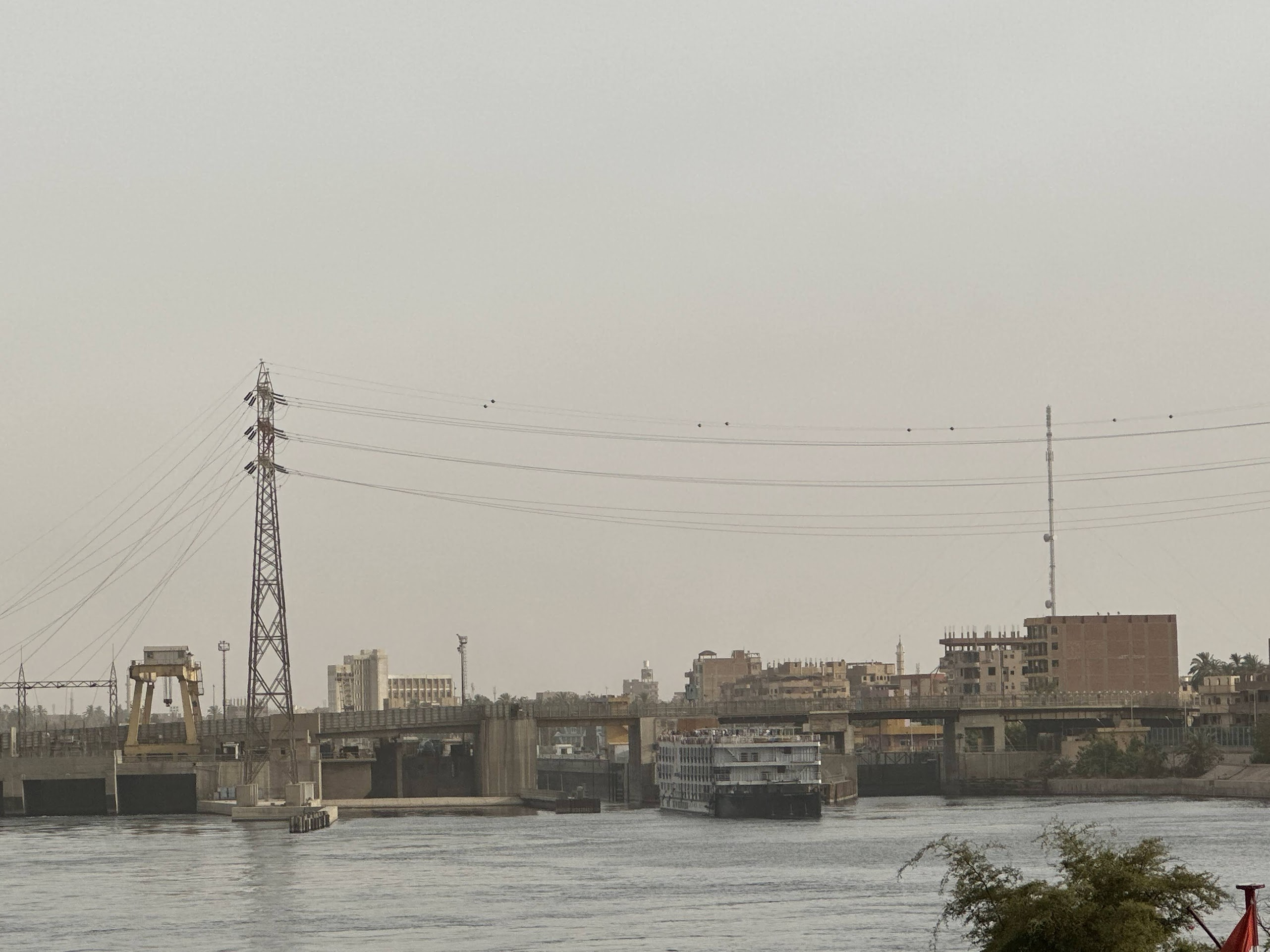
The video below shows our ship in the lock with the front gates slowly swiveling open.

Leave a Reply